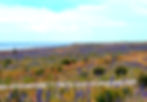Excursion tip on Öland: Neptuni fields
- Treefling
- Sep 26, 2022
- 1 min read
In northwestern Öland, in the municipality of Borgholm, lies Neptuni fields, a twenty-hectare barren nature reserve. It was named after the Roman sea god Neptune by none other than Carl von Linné, in 1741.

(Image credit: BengtALundberg / CC BY 2.5. Color enhancement.)
The area mainly consists of a widespread cobblestone field, where its rocks have been eroded down to their present form by the forces of the sea. Among the rocks are fossils* from animals that lived millions of years ago, for eg trilobites.
(*In the reserve, it is forbidden to knock loose or pick up fossils.)
In the barren and windy environment, only drought-resistant plants can survive. You can find, among other things, breckland thyme, white mullein, carline thistle, white swallow-wort, and more growing among the stones. However, it is the viper's bugloss that is the big star in the reserve. In summer, Neptuni is covered in its magnificent blue flowers.
Along the shoreline during the warmer months, shorebirds such as redshank, ringed plover, and common pied oystercatcher forage. Sweden's largest eagle species, white-tailed eagle, regularly stays in the area.
In the southern part of the reserve iÖland's northernmost Viking burial ground can be found. It is 150 meters long, 30 meters wide, and consists of a number of cairns and different rock formations. South of the burial ground stands Höga flisa, a raised stone, which according to tradition was a Christian place of prayer for the local fishing population.
We at Treefling think it is important to spend time in the outdoors, take care of our nature and treat yourself to a hike in the beautiful nature reserve, Neptuni fields.




